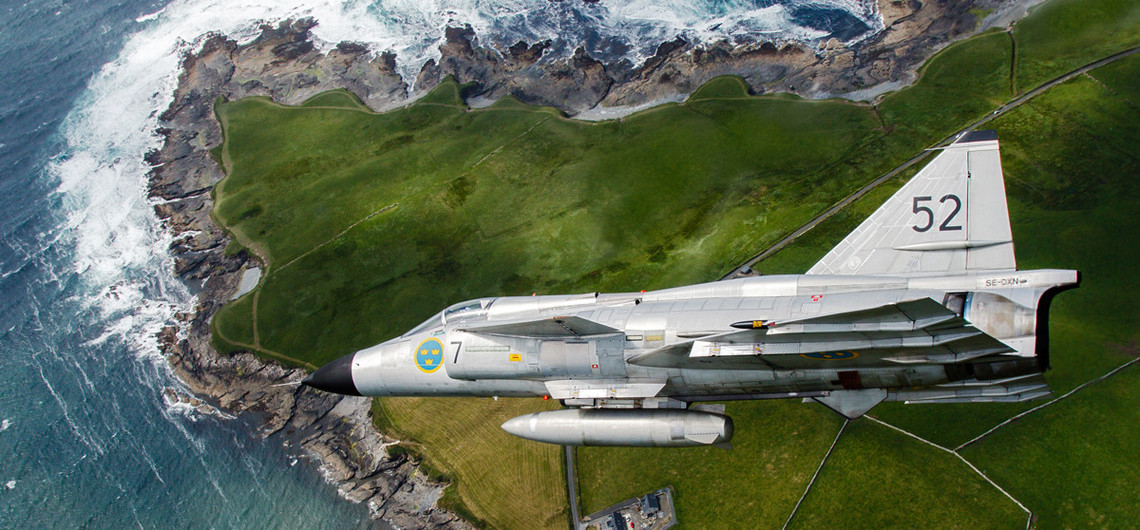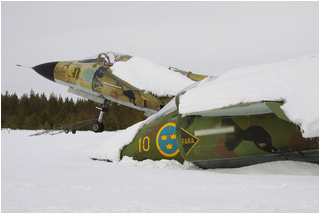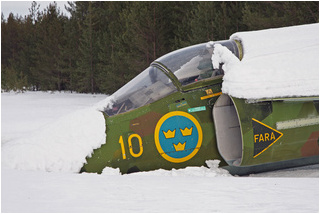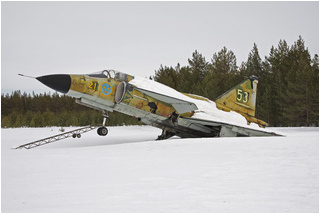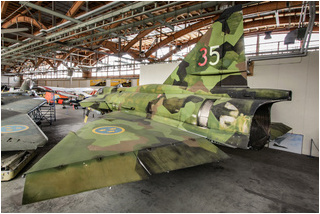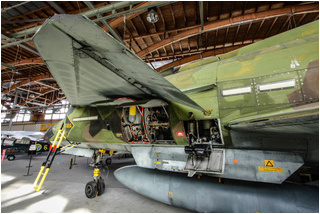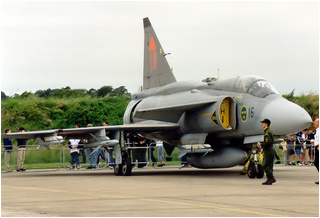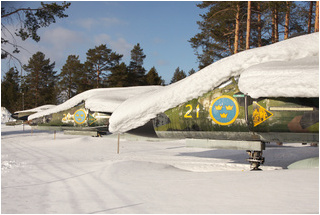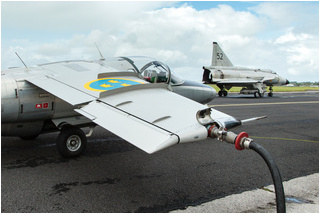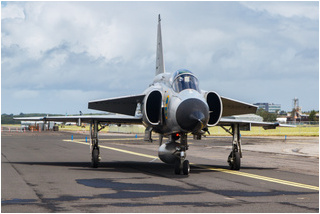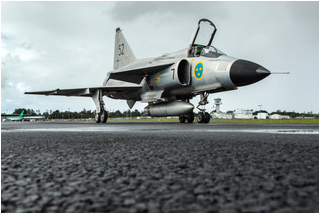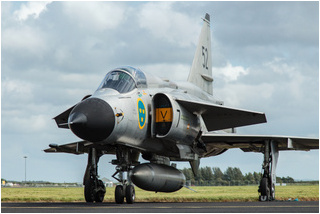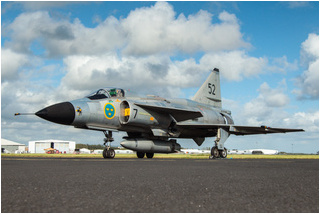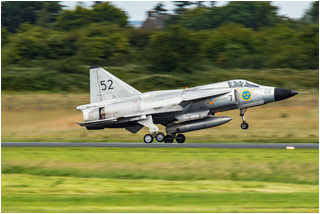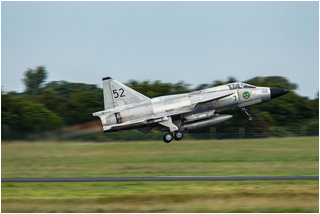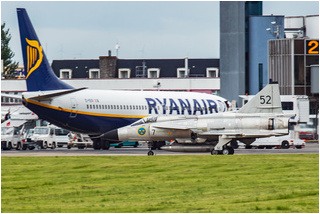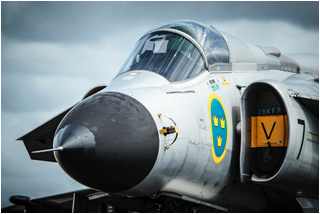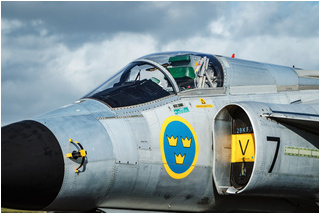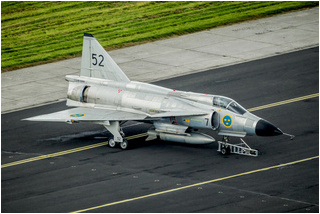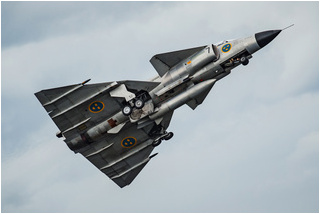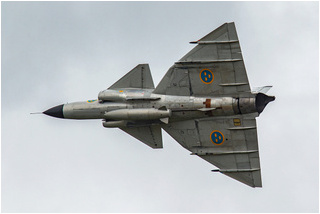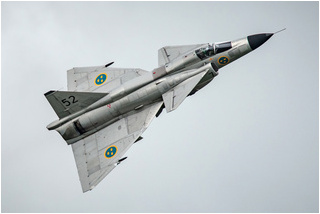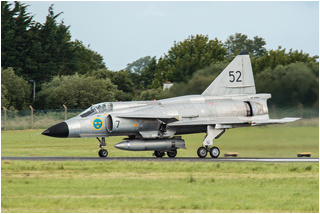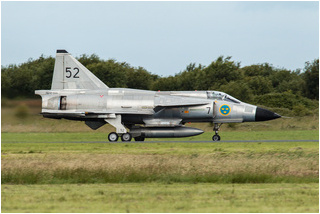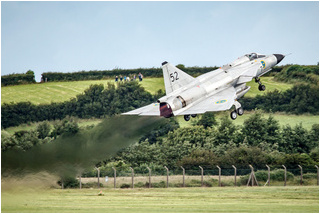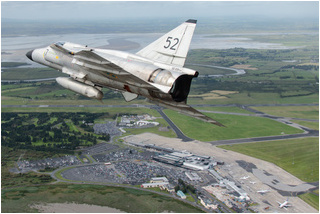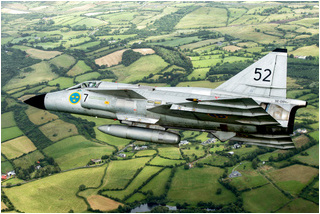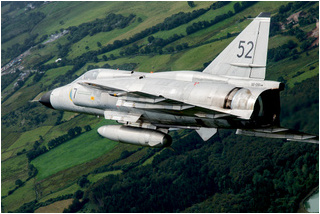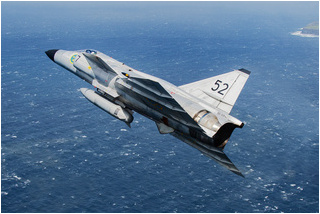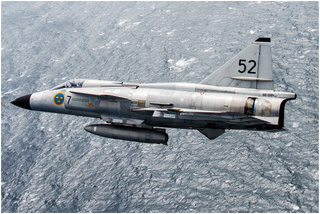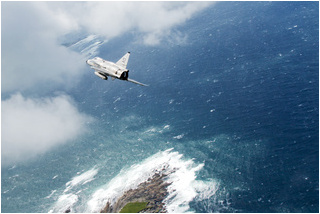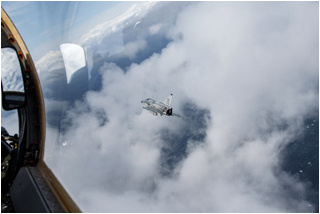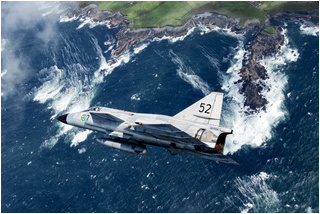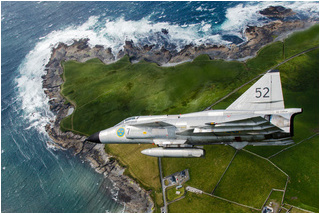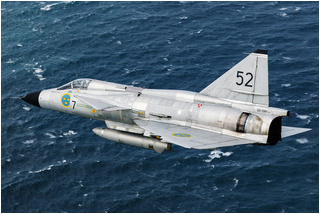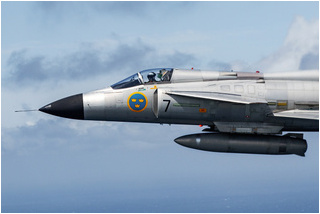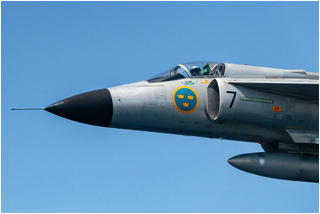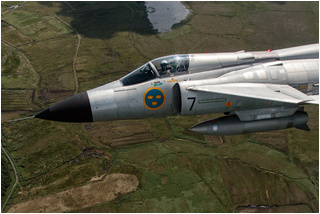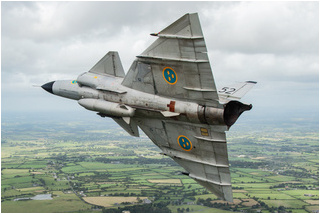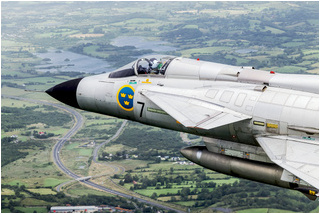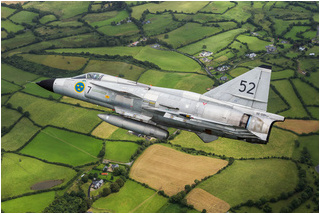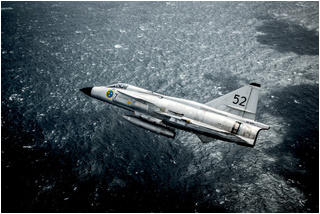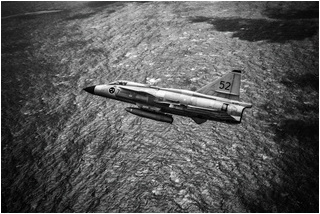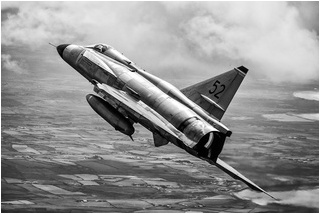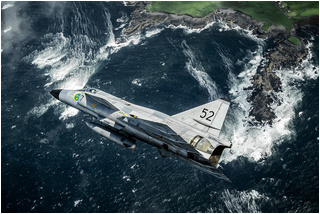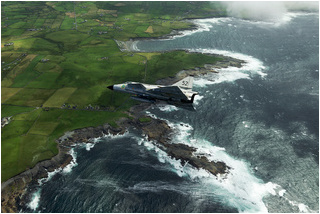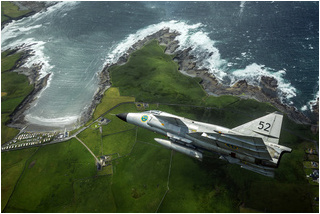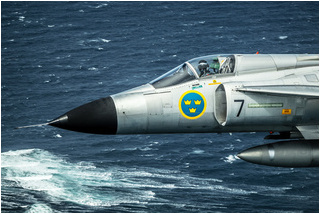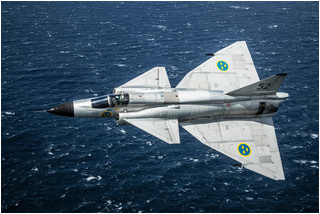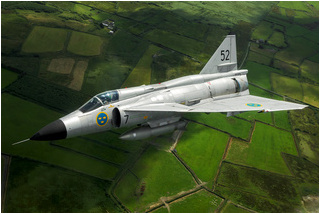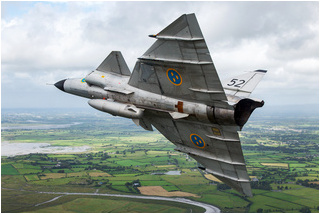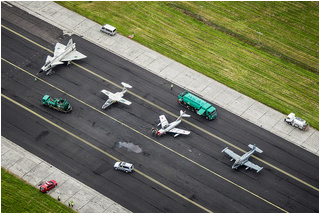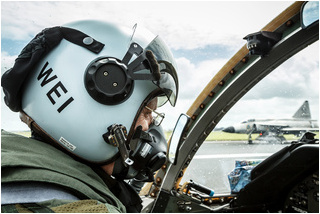Aircraft Profile - Saab 37 Viggen
By Frank Grealish / Sonya Cooley | January 2016 | Various Locations, Ireland & Sweden
In this short article we describe the famous Swedish canard fighter, the Saab 37 Viggen. As this is not intended to be a full service history of the type, further reading links are available at the end of this article.
While the aircraft has now been retired from active service, a single seat AJS 37 Viggen is operated and flown by the Swedish Air Force Historic Flight at air shows around Sweden and Europe.
In 2015 the SwAFHF brought the Viggen to Ireland for the Shannon Air Display in July, and the Portrush Air Waves air show in September. IrishAirPics had the opportunity to do an air to air photoshoot with the Viggen over the rugged Atlantic coastline of County Clare while it was in Shannon, you can some of our pictures from this photoshoot in this article, along with some of our other archive Viggen pictures.
History
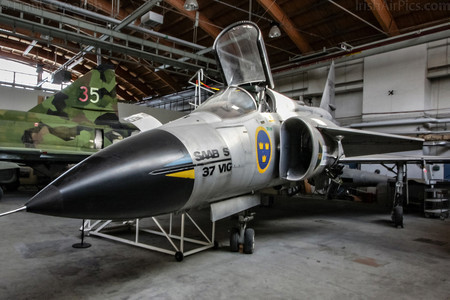
The Saab 37 Viggen (Thunderbolt) is a Swedish designed and built single-seat, single-engine, medium range, Mach 2, capable combat aircraft, the prototype of which first flew on 6th February 1967. The initial version to enter service was a ground-attack optimized variant, the AJ 37.
The Viggen was intended to replace the Saab 32 Lansen in service, and it was designed from the outset to counter the threat of a Soviet Union invasion. With this in mind, it had to be capable of operating from the Swedish network of short, roadway landing strips and could be maintained, re-armed & refueled by conscript crews who had received minimal training on the aircraft.
Swedish defense preparations also involved a network of hangars tunneled into the mountains at strategic locations around the country, and to help minimise the space taken up by the Viggen in these hangars, the vertical tail fin can be folded down.
Airframe & Engine
To facilitate operating from short runways, a powerful Volvo Flygmotor RM8 afterburning turbofan (a license-built version of the Pratt & Whitney JT8D with a Swedish-designed afterburner) is installed, this coupled with high lift canard fore-planes mounted each side of the air intakes helps get the aircraft off the ground in a hurry.
To cope with stresses of no flare landings, extensive use was made of titanium in the construction of the Viggen, and the aircraft has novel tandem twin wheeled landing gear. It is also fitted with reverse thrust buckets that are activated when the nosewheel touches the runway. One of the Viggen's party tricks is the ability to land, turn in reverse using the reverse thrust and take off back in the direction it just landed from. (SHOW VIDEO)
Avionics
It was decided that the Viggen should be a single seat aircraft, with a digital central computer and a head-up display replacing the human navigator. The computer, called CK 37 (centralkalkylator [central calculator] 37), was the world's first airborne computer to use integrated circuits.
It utilized the STRIL 60 system to link with Swedish defense systems. The main sensor was an Ericsson PS 37 X-band monopulse radar with several functions, including air-to-ground and air-to-air telemetry and cartography. The radar on the JA 37 interceptor was later upgraded to a multi-mode, pulse-Doppler Ericsson PS 46/A unit optimized for the fighter/interceptor role.
Weapons
A weapons load of up to 7,000 kg could be accommodated on nine hardpoints: one centreline pylon, two fuselage pylons, two inner and two outer wing pylons and two pylons behind the wing landing gear.
Amongst other weapons, depending on the role and aircraft variant, the aircraft could carry RB 04E & RB 15F anti-ship missiles, RB 05 & RB 75 air-to-surface missiles, 30 mm ADEN cannon pods, unguided rocket pods, various RB 24 (AIM-9 Sidewinder) air-to-air missile variants, along with the RB 99 air-to-air missile (AIM-120 AMRAAM).
Retirement
The Viggen has been phased out of active service in favour of the next generation Saab JAS 39 Gripen, with the last front line Viggen retired from the Swedish Air Force in November 2005. A few aircraft were kept flying for electronic warfare training against JAS 39 at F 17M in Linköping, with the last in-service Viggen flight taking place in June 2007.
SwAFHF - Swedish Air Force Historic Flight
The SwAFHF restored Saab JS 37 Viggen, SE-DXN (pictured in this article), to airworthy condition, making its post restoration flight in March 2012. The aircraft is all silver in colour, and this is the scheme the AJ 37 (the first operational variant of the Viggen) wore when the type was introduced to service with F 7 Wing at Satenas in 1973.
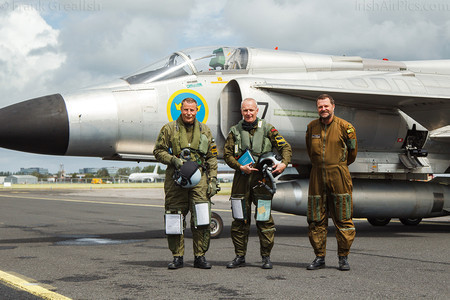
As well as the Viggen, the SwAFHF operates a fleet of airworthy aircraft from their Satenas base, including classic Saab jets as the J 29 Tunnan, SK 35C Draken and the SK 60E. Other former Swedish Air Force jets operated by the SwAFHF include the J 34 Hawker Hunter and the J 28 DeHavilland Vampire.
Further reading
Wikipedia: https://en.wikipedia.org/wiki/Saab_37_Viggen
A big Thank You goes to:
Stellan Andersson, Per Weilander, and Hakan Andersson from the SwAFHF, Derek Collins from Universal Aviation at Shannon, Niall Maloney, Airport Operations Director, Shannon Airport, Derek Coleman, Shannon ATC, and Se Pardy, Shannon & Bray Air Display Director, for their help and assistance taking the pictures of Viggen SE-DXN at Shannon.

